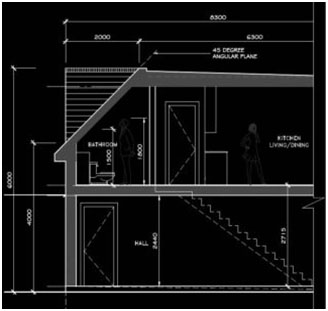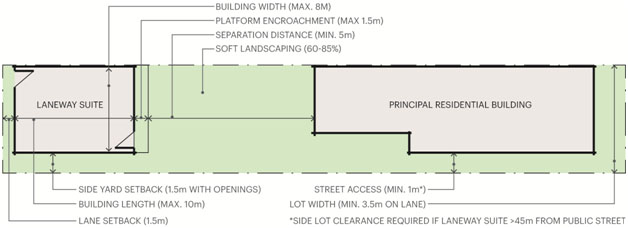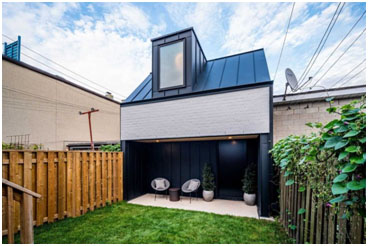Overview
Laneway suites present the opportunity to increase rental supply within established neighbourhoods without changing the look, feel or character of low-rise residential streets. They have the potential to make home ownership more affordable, offer multi-generational living and increase safety by adding bright lighting and more eyes on the street.
According to an article by the The Star, David Hulchanski, Professor of housing and community development at the University of Toronto, said, “in a city facing a lack of affordable housing, anything built should ideally be for rent…. However, he says, those monthly costs will likely match whatever the market dictates and won’t put a dent in the lack of affordable rental housing” They go on to say “The vacancy rate for purpose-built rentals in central Toronto is about 1.3 per cent, with a one-bedroom unit going for $1,561, according to the Canada Mortgage and Housing Corp. Those figures come largely from occupied units subject to rent control”.
Consider the gap in generational housing. Boomerangs (the children of boomers) return home to take their old bedrooms back to their parents house as house prices and qualifying incomes don’t meet. What would be possible when parents and children pool resources and build. This makes Laneways suites a very affordable strategy for millenials trying to get their first home. Co-ownership, where two or more parties share ownership of a house as a means to have access to affordable housing, is not a new concept in Toronto according to co-ownership expert Leslie Gaynor. A Laneway lot is likely the new ideal – two houses for two or more families on one lot.
Why Laneway Suites?
Laneway suites offer incredible flexibility for a wide variety of use cases. Possibilities include multi-generational living for adult children priced out of the hot Toronto market or loved ones to age in place, income properties with or without maintaining the garage for homeowner use, or live/work flex space. They can range from 450 to more than 1,700 square feet above grade.
The Potential of Laneways
For homeowners, a laneway suite is a great way to generate passive income via a rental property. As well, a second suite would also make a great option for housing aging parents or other family members. A laneway home will also surely increase the value of your property.
Over the past 60 or so years, housing prices have continued to rise in Toronto. With a looming housing crisis and shifting attitudes towards mobility in cities, the laneway home has risen to prominence. Laneway homes offer a myriad of benefits to both homeowners, neighbourhoods, and renters. Laneway suites present an opportunity to make better used of sometimes unused space, particularly for homeowners who choose to forgo owning a car.

Design
Laneway Suites are subject to a number of complex and sometimes overlapping zoning requirements. There are requirements for setbacks from property lines, separation from the principal residence, and soft landscaping for the property. There are also specific guidelines for building height based on the size and layout of your existing dwelling, and restrictions on the shape (or even existence) of the second storey if the Laneway Suite is too close to the Principal Residential Building. Some leeway is given for encroachment into the building separation by decks and canopies, and some flexibility is built into the process by not counting the floor area of a Laneway Suite against the total allowed on a lot.

To sum up everyone can remember these points to build a cost effictive and beautiful Laneway suite-
1.The Design and Build Process
2.Multi-generational Living
3.Live/Work Flex Space
4.Parking and Outdoor Spaces
5.Design
CONCLUSION:
Overall, these changes promise to make our changing lanes program better. The ultimate goal is to enable average homeowners to easily create housing flexibility and unique rental options while maintaining the character of low rise residential neighbourhoods. The recommendations made are small, yet critical steps forward in a living and growing initiative.


© Copyright 2024 Y and C Contracting
Designed By Webpristine Technology